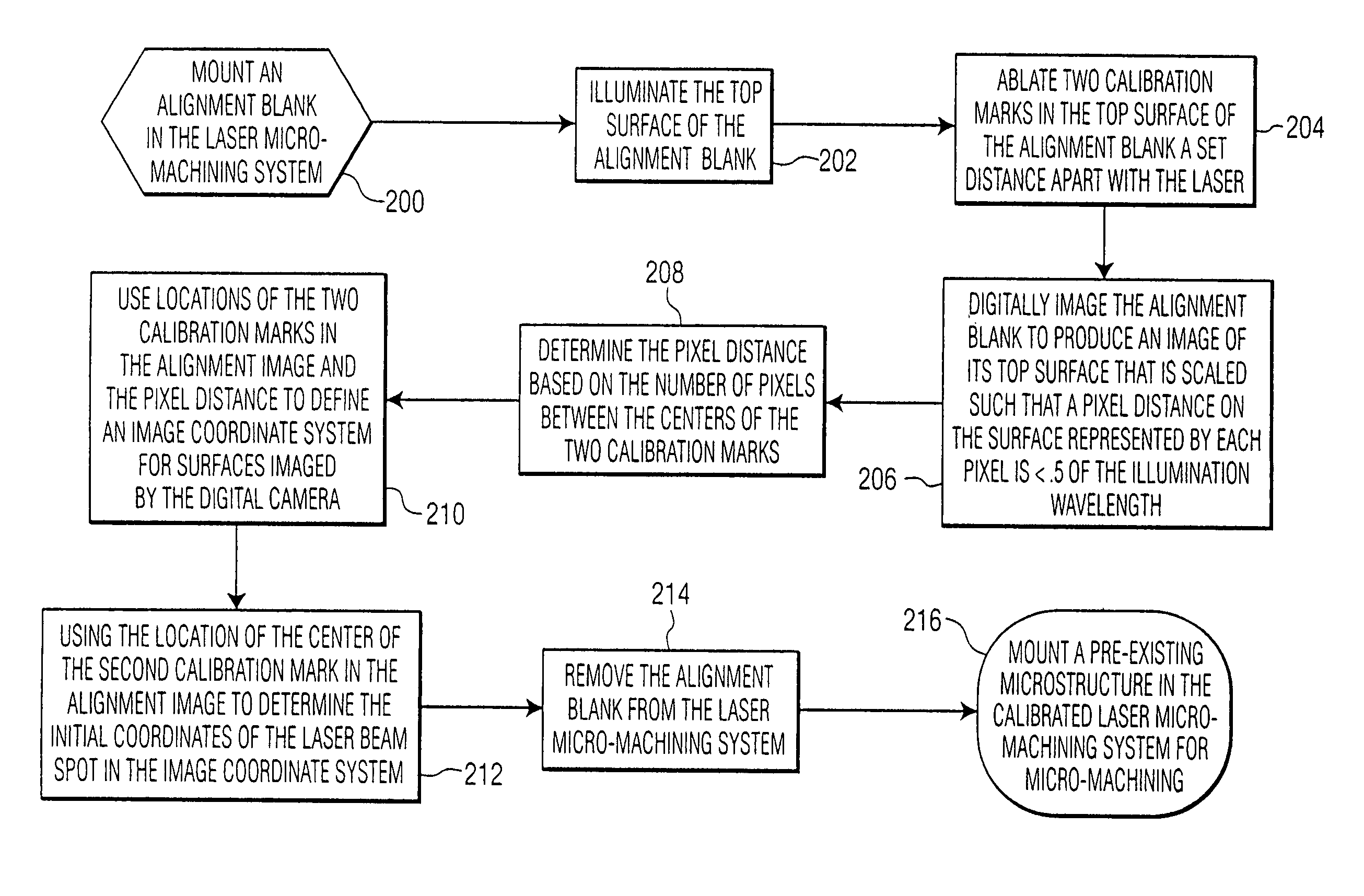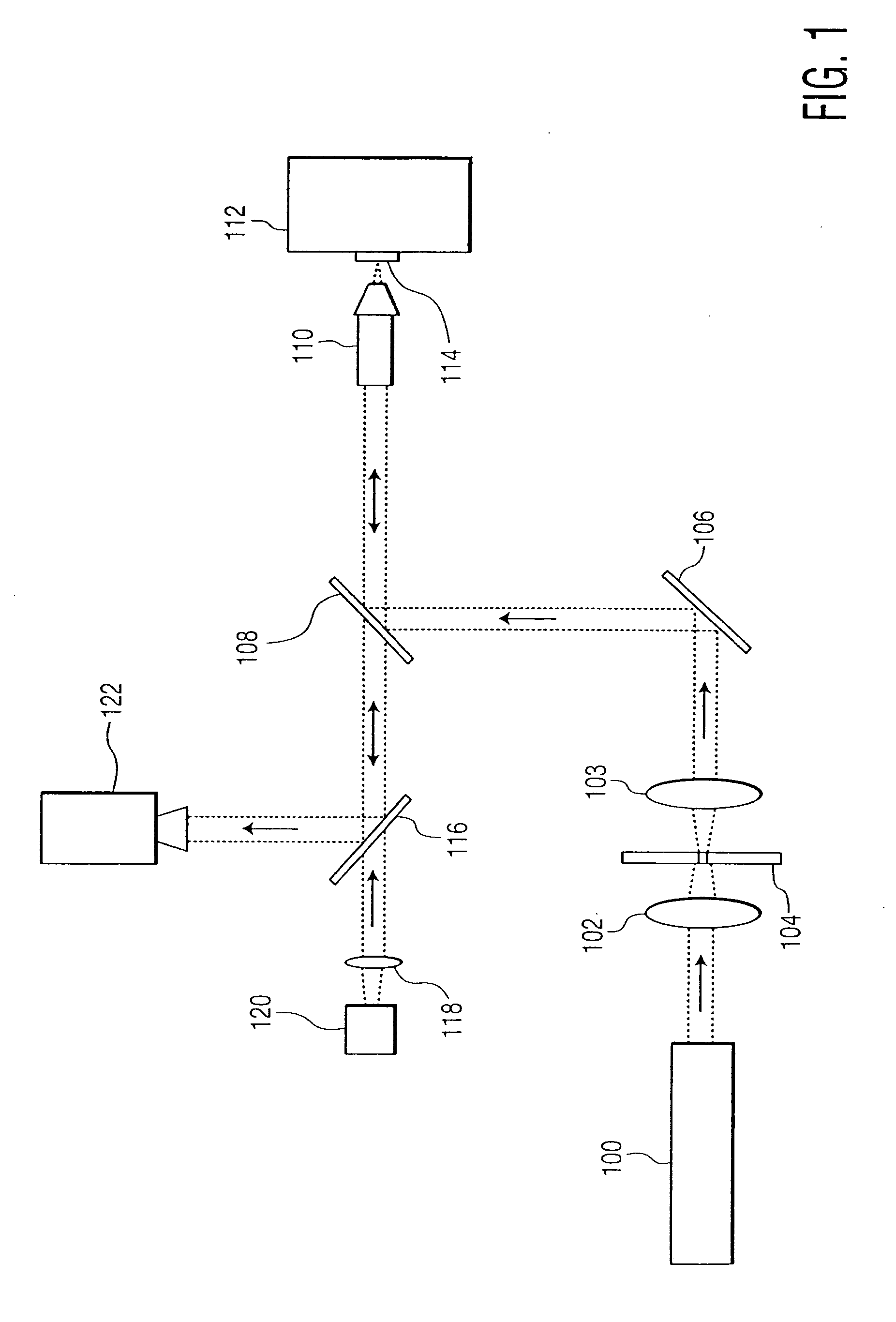Ultrafast laser direct writing method for modifying existing microstructures on a submicron scale
a microstructure and ultrafast laser technology, applied in the field of ultrafast laser direct writing method for modifying existing microstructures on a submicron scale, can solve the problems of complex lithographic methods, high-cost techniques usually require stringent environmental conditions, and complicated manufacturing of materials
- Summary
- Abstract
- Description
- Claims
- Application Information
AI Technical Summary
Benefits of technology
Problems solved by technology
Method used
Image
Examples
Embodiment Construction
[0036]FIG. 1 illustrates a simplified block diagram of an exemplary laser micro-machining system that may be used in any of the exemplary methods of the present invention. This exemplary system includes laser source 100, work piece holder 112, work piece illumination source 120 and digital camera 122 to image the work piece, as well as numerous optical elements to direct and shape the optical beams. The optical beams are shown as dotted lines with arrows indicating the direction(s) of light propagating in the different sections of the exemplary system.
[0037] In this exemplary system, laser source 100 may desirably include an ultrafast laser, an excimer laser, or another type of laser typically used for laser machining applications. Harmonic generating crystals and / or amplifiers may be used within this component. Desirably, a frequency-doubled, 150 fs Ti:Sapphire laser (for example a Clark MXR CPA2000) may be used as the laser. Laser source 100 may also desirably include optics to c...
PUM
| Property | Measurement | Unit |
|---|---|---|
| pitch size | aaaaa | aaaaa |
| pitch size | aaaaa | aaaaa |
| sizes | aaaaa | aaaaa |
Abstract
Description
Claims
Application Information
 Login to View More
Login to View More - R&D
- Intellectual Property
- Life Sciences
- Materials
- Tech Scout
- Unparalleled Data Quality
- Higher Quality Content
- 60% Fewer Hallucinations
Browse by: Latest US Patents, China's latest patents, Technical Efficacy Thesaurus, Application Domain, Technology Topic, Popular Technical Reports.
© 2025 PatSnap. All rights reserved.Legal|Privacy policy|Modern Slavery Act Transparency Statement|Sitemap|About US| Contact US: help@patsnap.com



